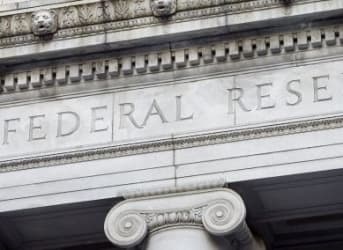In my last article I outlined the case that the fall in commodities is a result of Fed policy more so than fundamentals. The fall in oil began, almost to the day, when the dollar began its rise last June and remained perfectly inversely correlated for rest of 2014 into part of 2015. In 2015, the dollar began to weaken as the U.S. economic growth myth got exposed and yet oil, instead of rising, fell further. The Iran deal helped, as well as OPEC continuing to pump oil above quota levels.
Admittedly, U.S. oil inventories remain above historical levels, a trend that accelerated in the second half of last year, further fueling the decline in oil. To some extent, that oversupply was enabled by the Federal Reserve’s easy money via rising leverage, as speculation in futures markets drove oil prices up. However, the initial spark was probably tied to a change in the Federal Reserve policy of propping asset prices via Quantitative Easing (QE) vs. what’s going on now in threatening to raise rates.
Coincidence?
With Congress reaching a debt ceiling/budget deal, we learned more about how and why this occurred. Instead of more QE, it appears the government is opting for more fiscal stimulus in 2016 as the “deal” basically gives the White House unlimited spending thanks to a relaxed debt ceiling. Coincidence right? Of course not. Related: 10 Tips For Oil Companies To Ride Out The Storm
Now it’s becoming clearer as to why this option was taken once again: allow the government to distort asset prices through intervention.
The Yuan Threat
As has been reported in the media, the IMF is likely to include the Yuan in its basket of currencies, basically opening the door to the Yuan becoming a reserve currency. This is occurring at the same time the petrodollar is being sold, as commodity oriented nations such as Saudi Arabia are selling wealth funds (i.e. U.S. dollars) to fill their budget gaps. Related: One Chart That Explains The Stupidity Of Congress’ SPR Plan
Since this adds to downward pressure on the U.S. dollar, it’s no wonder the Federal Reserve has changed course. For one, a strong U.S. Dollar depresses commodities coming into an election year, boosting consumers in lower income brackets. The second motivation for a strong dollar is to ward off the threat of the Yuan replacing the Dollar as the reserve currency.
Impending U.S Dollar Weakness
The news that the Chinese government is considering relaxing capital controls and thus allowing the Yuan to appreciate, is a sign that they think the IMF inclusion of the Yuan is imminent. The displacement of the Petrodollar, even fractionally, will result in a drop in the U.S. Dollar. Thus, with this threat, if the Federal Reserve undertakes another round of QE it will further stoke U.S. Dollar weakness. Related: Is This The Most Bearish Oil CEO Statement Yet?
That would reverse the commodity declines that began last summer, wreaking havoc on the standard of living especially for the lower income electorate the government depends on for votes, come 2016. So the Fed is weighing the negative consequences of a strong dollar on corporate profits vs. unleashing inflation on the electorate, pressuring long term interest rates. We now see which negative scenario they favor and why.
This should further explain the influences on oil prices and clearly show that fundamentals aren’t the only thing at play on setting prices.
By Leonard Brecken for Oilprice.com
More Top Reads From Oilprice.com:
- Policy, Coincidence Or Conspiracy: What’s Really Holding Oil Prices Down?
- U.S. Shale Lifelines Running Thin
- Iran May Not Be That Attractive To Oil Industry After All


















